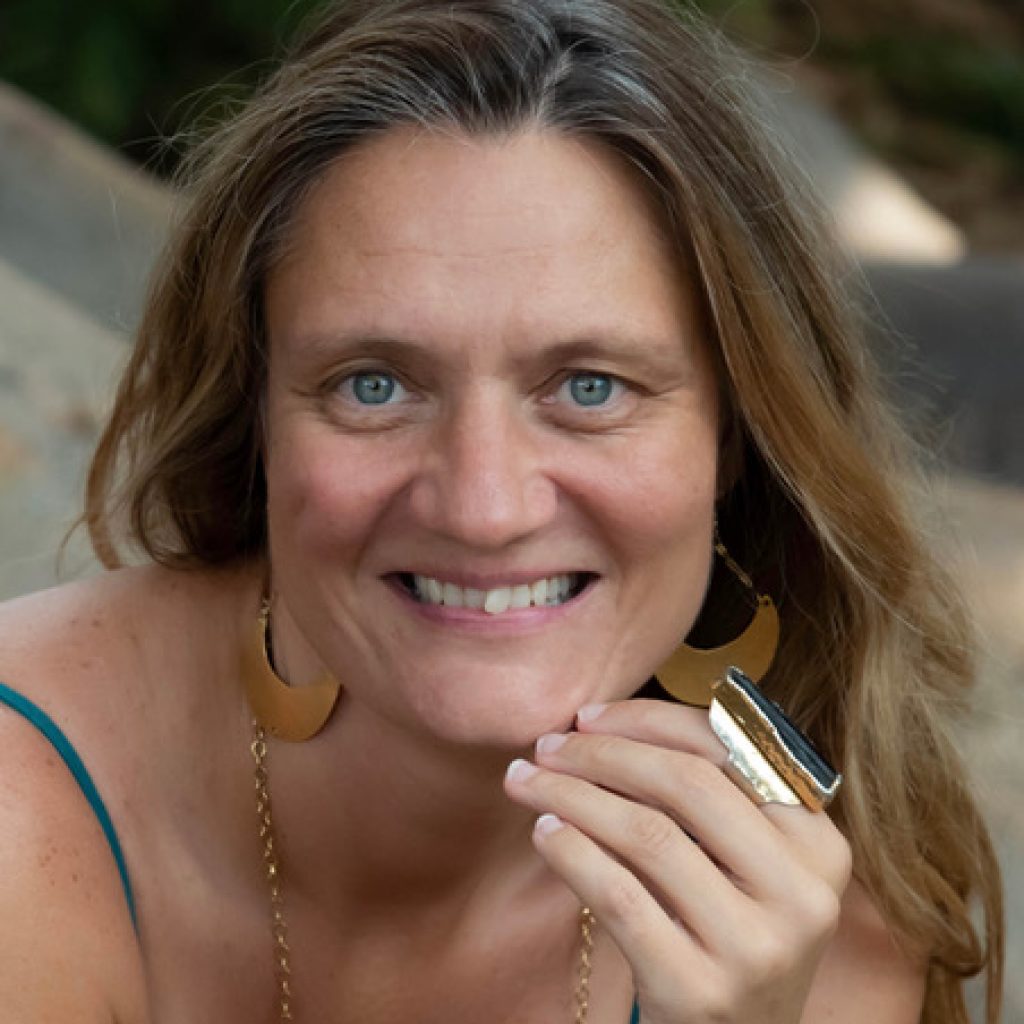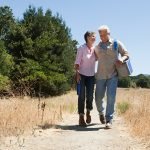Opening the Door
Acknowledging Vulnerability Is a Powerful Tool for Building Resilience
AMY CHADWICK, ND
Vulnerability is an inherent aspect of being alive. As such, vulnerability has a purpose. When needs are heard, acknowledged, shared, and met with compassion, vulnerability engenders resilience. And resilience favors well-being of body and mind.
Unfortunately, vulnerability is often associated with weakness. This association diminishes the resilience building potential of being intimate with vulnerability and can even cause further harm. Being vulnerable and acknowledging one’s needs can be difficult. Accepting the vulnerability of others can also be difficult. The doctor-patient relationship is a fertile space for exploring this uncomfortable edge of our humanity. It often invites us as healers to acknowledge our own relationship with vulnerability as we invite the sharing of experiences, create the space to discuss pain, trauma, or fear, and work in collaboration with our patients to find ways to meet the needs they express.
The following is an exploration of the powerful relationship between vulnerability and its impacts on cultivating physiologic and mental/emotional resilience, including a recent case study. It is my intention that time spent considering this topic will invite curiosity and allow for a more powerful engagement of practitioners and patients in the healing process.
Resilience
Resilience is defined by Rachel Yehuda as a “reintegration of self that includes a conscious effort to move forward in an insightful, integrative, positive manner as a result of lessons learned from an adverse experience.”1 Yehuda, an expert in trauma recovery, recognizes that resilience exists even while diagnoses, symptoms, and challenges remain. A person with posttraumatic stress disorder may have extreme moments of panic during a traumatic memory, yet they can still be simultaneously resilient. Dr Catherine Painter-Brick, who directs the Program on Conflict, Resilience, and Health at Yale University, defines resiliency as a “process to harness resources to sustain well-being.”1 Resilience, as a means for sustained well-being, is much broader than the absence of pathology. Resilience, as a process, necessitates listening to what people have to say about their everyday lives, what goals are important to them, what they are already doing, what resources they have available, and what well-being means to them. As needs are acknowledged and met, from the most basic physical needs of food, shelter, and physical safety to more abstract needs like self-actualization and creative expression, there is greater capacity for meeting adaptive demands.
Risk and Reward
The state of being vulnerable is like a double-edged sword. Along with its potential for growth, connection, and healing, it is also a state of increased susceptibility to physical or emotional harms. As such, vulnerability can elicit protective responses: defend, attack, avoid, freeze. Interestingly, from a physiologic standpoint, our bodies have immense capacity for tolerance – even in the face of continual risk. Mentally, emotionally, and physically, we have mechanisms for sustaining well-being and engaging in daily activities despite potential harm. We eat, we drive, we wield sharp objects, we build fires, we interact with other people. Every one of these, and pretty much everything else we do, carries some risk to the innate vulnerability of the human body and psyche. Our ability to do these things is not simply based on a balancing act of risk versus reward. It is predicated on resilience. Resilience is both the gift of vulnerability – when needs are acknowledged and met – and the process through which we engage with life despite our vulnerability. Vulnerability invites us to receive support from life, including one another. And in this state of co-creation, of need and response, of giving and receiving, resilience is cultivated. We receive pleasure, beauty, connection and physical, mental, and emotional support. Physiologically, our endorphin bank is filled, giving us the flexibility for greater adaptive responses and efficient healing.
Even in the face of inherent vulnerability, our bodies are programmed for tolerance and resilience. The immune system is an excellent example, engaging in tolerance most of the time with only the occasional solicited response to a perceived threat. Immune tolerance is cultivated through the very mechanisms that also bring risk: eating, touch, intimacy. A balanced autonomic nervous system (ANS) and healthy endorphin activity, nourished through sensory beauty, pleasure, and a sense of safety, favor well-being over exaggerated reactivity. Through an intimate relationship with vulnerability, and acknowledging with compassion our unique needs, we can receive support and build trust. A sense of safety becomes the default. And in such a state of safety, the ANS has greater flexibility.
On the other hand, vulnerability without adequate support, where needs go unacknowledged and unmet, fuels a perpetual state of feeling unsafe. Protective responses manifest. In a state of fear or depletion, the ANS is contracted, favoring excess sympathetic solicitation in order to calibrate the endocrine system and signal the body to adapt to perceived danger or aggression. In prolonged or extreme states, adaptive responses may overwhelm the reserves of the body and favor disease. Despite the paradox of vulnerability, acknowledging it with skill invites greater access to a sense of safety and well-being.
Vulnerability is Not a State of Weakness
One of the best examples of the intimate link between vulnerability and resilience can be observed in young children. While everybody is inherently vulnerable, infants and small children are especially so. And it is human instinct to care for them, without judgement or perceiving weakness. Children seem to feel no apparent shame in needing help and asking for it, and they are incredibly resilient. Often more so than many adults, children have abundant capacity and yet are incredibly vulnerable.
Research has found that resilience in children is nourished by close, beneficial relationships with their people.1 When a child is seen, heard, and their needs are met, trust is built. We also observe in children the natural inclination towards curiosity, exploration, and mastery of skills such as crawling, walking, or climbing. Looking at childhood development through the lens of vulnerability and resilience, it is clear that one aspect of vulnerability is that it invites caution. Similarly, resilience is partially fostered through navigating that caution and mastering experience. Healthy childhood development includes giving children the space to learn and explore within the boundaries that allow them to feel safe and express their needs, which then fuels self-awareness and growth. The same is possible for adults. Having someone’s back, providing emotional security, and giving support with compassion and without blame nourishes resilience in all age groups. When vulnerability is not seen as a weakness, but as an inherent aspect of humanity, the invitation to have one another’s back becomes more instinctual and cultivates resilience in both the giver and receiver, a state we each inhabit at different times.
It is unfortunate that in the current culture in the United States, vulnerability is often associated with weakness, shame, or blame. These sentiments, often internalized individually, favor the treacherous edge of vulnerability and leave too many people feeling isolated, marginalized, guarded, and defensive. In this state, any underlying susceptibility is subject to manifesting as disease through a cascade of adaptive patterns and overwhelmed buffering capacity. Isolation, guarding, and defense can manifest in physical and emotional disease. For example, at the cellular level, when the body’s emunctory systems become congested and cells are unable to receive healthy nourishment, remove waste, or receive signals for healthy division and programmed cell death, cancer may develop. Psychologically, isolation may favor depression and defensiveness may present as rage or internal and external destructive patterns. As the body becomes more dysregulated in its attempts to manage and adapt, disease susceptibility increases and internal resilience is compromised, adding to physical and emotional vulnerability and need.
A Sample Case
Jenny is a 34-year-old female who had struggled with anxiety and disordered eating since childhood. As an adult, she was finally accurately diagnosed as having celiac disease. When a part of the body, in this case the small intestine, is physically compromised, an internal vulnerability can manifest throughout the entire system. This likely happened for Jenny at a very young age. One might assume that removal of the offending agent, in this case gluten, would eventually eliminate this vulnerability and allow her system to return to health. In Jenny’s case, removing dietary gluten only partially improved her anxiety, and she still struggled with bloating, fullness, and difficulty figuring out what to eat. Her sense of safety around food was compromised. What’s more, the initial vulnerability caused by her intolerance to gluten also likely compromised the flexibility and adaptability of her ANS.
In Jenny’s case, the chronic inflammation and reduced nutrient absorption likely led to increased solicitation of parasympathetic activity to support her digestion. This strong solicitation of the parasympathetic nervous system for digestion can functionally limit parasympathetic flexibility throughout the body. To compensate, her sympathetic nervous system would have also experienced heightened activation, not only to maintain normal tone in the face of increased parasympathetic activity, but also to address the combined threats of abdominal pain, discomfort, and diminished nutrient absorption.
After she received her diagnosis and began her recovery, additional layers to consider for Jenny included the vulnerability of having to be vigilant about gluten exposure and learning to navigate new social dynamics. Working with disordered eating patterns in the face of a necessary food restrictions compounded these challenges. Jenny felt very resilient and competent in her professional life, but she did not trust her ability to nourish herself well.
It is not uncommon for patients with celiac disease to experience anxiety, even when in remission. Prolonged demands on adaptive pathways may engrain a hypervigilance within the nervous and endocrine systems. During her visits, Jenny sought guidance on what to eat, but she quickly became overwhelmed with food planning and preparation. She expressed shame about not trying new recipes and acknowledged that she had never liked cooking. Though somewhat improved, her anxiety and GI symptoms persisted. However, Jenny eventually shared that when she ate at a restaurant, with a waitstaff and chef well versed in food allergy safety, she did not experience any bloating or sensation of fullness. She also felt more calm after her meal. When she ate at home, despite making healthy gluten-free food, she did not feel well.
Jenny’s resilience remained diminished, despite the removal of gluten. When Jenny made food for herself, she felt a great deal of pressure to make food that was “good” for her, but she found cooking to be arduous and anxiety inducing. In honoring her needs, we explored ways to nourish her, including eating out, meal delivery, and very simple go-to foods to keep in her fridge. This allowed Jenny to soften her self-criticism for what she had perceived as a weakness. Recognizing that her nervous system was more regulated when she was being served and that she could digest her food more easily when she felt taken care of was the key. Her vulnerability, her courage in sharing her needs, and her willingness to find creative solutions to meet them allowed Jenny to approach her sense of self and her relationship to her illness with greater compassion and acceptance. On a physiological level, this likely allowed for greater flexibility of her ANS and improved her endorphin activity.
Conclusion
Resilience is both restorative and preventive medicine. With improved resilience comes greater adaptive flexibility. Resilience also helps foster skillful responses and resolution over reactive states and/or actions that can create further harm. From the individual to the societal whole, resilience is vital to sustained well-being. To facilitate healing, we are invited to give conscious attention to our relationship with need and vulnerability, and to be curious with the discomfort this can produce. As healers, we are asked to foster this relationship within ourselves. We build our own resilience in order to invite our patients to receive the benefits of vulnerability within the container of safe connection.
Any of our patients, with any health condition, could have potentially been used for Jenny’s example. From chronic disease to injury, allergy to digestive disorders, anxiety to amenorrhea, each person uniquely experiences the physical vulnerability that is at the root of, or is a consequence of their symptoms. They harbor their own beliefs, self-judgements, and fears. They are also part of larger societal systems which exponentially magnify states of vulnerability, and they may have experienced familial, cultural, and healthcare situations which have compounded unmet needs or states of harm. We, as clinicians, have numerous tools for addressing the physiologic symptoms that arise in our patients, and physical resilience is partially supported by improving biologic function. Through an understanding of the physiology of allowing vulnerability to nurture the expression and acceptance of one another’s needs, we have another avenue that honors individual humanity, celebrates the body’s ability to thrive, and supports movement within ourselves and our patients from patterns of compensation to patterns of resilience.
[Refs]- Southwick SM, Bonanno GA, Masten AS, et al. Resilience definitions, theory, and challenges: interdisciplinary perspectives. Eur J Psychotraumatol. 2014;5:10.3402/ejpt.v5.25338.

Amy Chadwick, ND, graduated from NUNM in Portland, OR. After finishing her degree, she completed a fellowship in endobiogenic medicine. Dr Chadwick currently practices in Carlsbad, CA, and uses her background in systems biology and integrative physiology to explore patterns of living, thriving, and disease. Dr Chadwick also speaks and writes on a diverse range of topics she is passionate about.










